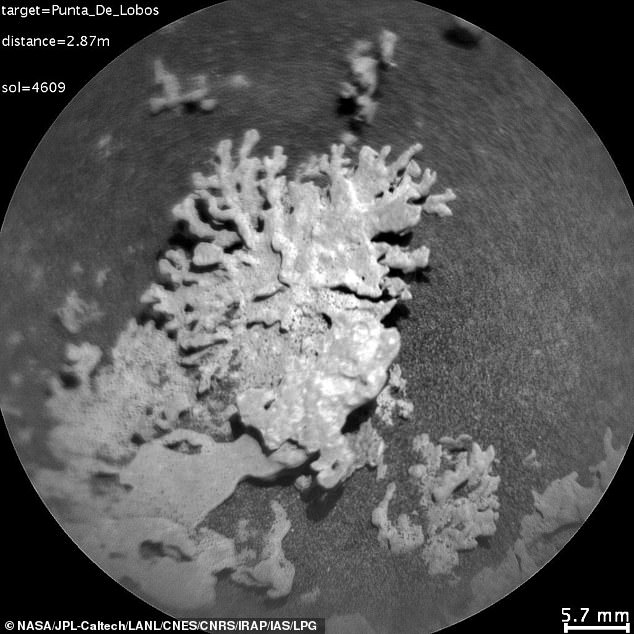NASA's Mars Findings Ignite Life Claims

Unusual Rock Formations on Mars Spark New Theories About Ancient Life
A recent discovery by NASA’s Curiosity rover has captured the attention of scientists and space enthusiasts alike. The rover, which has been exploring the Martian surface for years, captured images of a peculiar, coral-like rock formation that has raised intriguing questions about the possibility of ancient life on the Red Planet.
The strange structure, resembling coral, was found in Gale Crater, a region known for its unique geological features. According to NASA, the formation is the result of natural processes that occurred billions of years ago when water once flowed across the Martian landscape. Over time, mineral-rich water seeped into tiny cracks in the rocks, depositing solid veins that were later exposed through wind erosion. This process gradually revealed the unusual shapes seen today.
The images taken on July 24, 2025, during the rover’s 4,609th Martian day, have sparked widespread interest online. Some users on social media suggested that the formations could be evidence of ancient life, with one person stating, “Corals are true signs of ancient life forms along with the ancient rivers. This is a huge discovery!!” Others claimed that the rock might contain fossilized foreign life material, highlighting the growing curiosity around Mars’ potential to host life in the past.
While some speculate about extraterrestrial origins, scientists remain focused on understanding the geological history of the planet. The formation is believed to have developed when liquid water existed on Mars, shaping the planet’s geology over billions of years. Today, Mars is a frozen desert, with most of its water locked in ice. However, these findings serve as a reminder that the planet may have once had conditions suitable for life.
Curiosity is not the only rover uncovering clues about Mars’ past. In 2024, NASA’s Perseverance rover discovered what it described as the first possible signs of ancient life on the Red Planet. The rover identified a rock named Cheyava Falls, located in an ancient river valley. The rock contained organic compounds and chemical signatures that could indicate microbial activity.
The rock, measuring 3.2 feet by two feet, showed vein-like structures filled with white calcium sulfate. Between these veins were bands of reddish material, suggesting the presence of hematite, a mineral responsible for Mars’ characteristic rusty color. Further analysis revealed small, off-white splotches surrounded by black halos, similar to leopard spots on Earth. These features, analyzed using an X-ray tool, were found to contain iron and phosphate, raising the possibility of biological activity.
David Flannery, an astrobiologist involved in the research, noted that such features on Earth are often linked to fossilized microbes. He stated, “These spots are a big surprise. On Earth, these types of features in rocks are often associated with the fossilized record of microbes living in the subsurface.”
Despite these discoveries, scientists caution that more research is needed to confirm whether these formations are indeed evidence of ancient life. The presence of water and organic compounds does not automatically mean life existed, but it does suggest that Mars may have once had the right conditions for it.
As NASA continues its exploration of Mars, each new finding brings humanity closer to understanding the planet’s history and its potential to support life. With ongoing missions and advanced technology, the search for answers continues, offering exciting possibilities for future discoveries.

Comments
Post a Comment